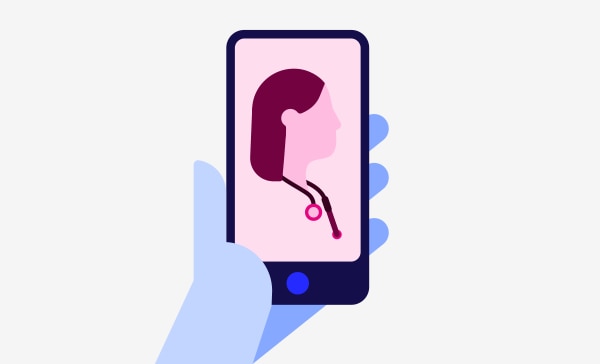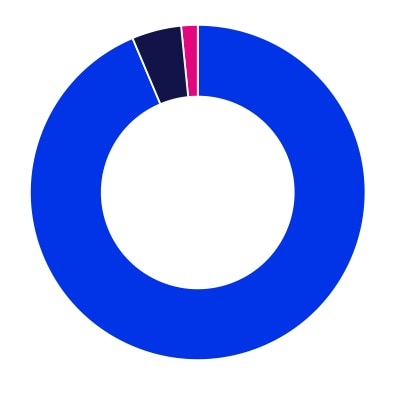Vascular conditions
Vein disease and varicose veins
Break free from leg pain and varicose veins.

Leg vein disease, or chronic venous insufficiency (CVI), occurs when the blood in the veins doesn't flow back to the heart but flows backward instead (referred to as reflux) when a diseased vein is left untreated. Depending on the severity of the disease this can cause symptoms such as spider veins, varicose veins, discoloration, swelling, heaviness, raised veins, and leg ulcers.
Understanding vein disease

Varicose veins are not just a cosmetic issue. Leg vein disease can cause varicose veins and other painful symptoms that can impact how you live.
Exploring treatment options

Treating vein disease and varicose veins with Medtronic procedures is easier than you may think.
Finding a doctor

Use this search tool to find a doctor who offers the VenaSeal™ procedure or ClosureFast™ procedure from Medtronic.
Medtronic is here to help you break free from leg pain and unsightly varicose veins caused by vein disease — so you can get back to feeling good again.
Vein disease is common — you are not alone.
Vein disease can affect anyone, regardless of age, gender, or race. More than 190 million people have CVI or varicose veins globally.2 In the United States, more than 30 million people suffer from varicose veins or CVI, yet the majority remain undiagnosed and untreated.†,1
| 30 million people in the United States with CVI or varicose veins†,1 |
 |
| 2 million seek treatment each year†,1 |
 |
| 447,000 receive treatment each year†,1 |
 |

† Statistics based on individuals over the age of 40.
Check your symptoms.
Think you’re experiencing vein disease?
Use our quick symptom checker to assess what's going on and learn how you could feel better. The journey to feeling good again starts here.

Common vein disease questions
What causes leg vein disease?
Healthy veins in the legs have valves that allow blood to flow in the direction of the heart. Vein disease develops when the valves stop working properly and cause blood to flow backward and pool in the lower leg veins, which is known as venous reflux.2
1. Gloviczki P, Comerota AJ, Dalsing MC, et al. The care of patients with varicose veins and associated chronic venous diseases: Clinical practice guidelines of the Society for Vascular Surgery and the American Venous Forum. J Vasc Surg. 2011;53(5 Suppl):2S–48S. doi: 10.1016/j.jvs.2011.01.079.
2. Based on strategic market assessment: Chronic venous insufficiency. Dymedex Consulting, LLC; November 2014.
3. Johns Hopkins Medicine. Chronic venous insufficiency. Updated 2024. Accessed November 13, 2024.
4. Morrison N, Gibson K, McEnroe S, et al. Randomized trial comparing cyanoacrylate embolization and radiofrequency ablation for incompetent great saphenous veins (VeClose). J Vasc Surg. 2015;61(4):985–994. doi: 10.1016/j.jvs.2014.11.071.
5. Proebstle T, Alm J, Dimitri S, et al. Three-year follow-up results of the prospective European multicenter cohort study on cyanoacrylate embolization for treatment of refluxing great saphenous veins. J Vasc Surg Venous Lymphat Disord. 2021;9(2):329–334. doi: 10.1016/j.jvsv.2020.05.019.
6. Gibson K, Ferris B. Cyanoacrylate closure of incompetent great, small and accessory saphenous veins without the use of post-procedure compression: Initial outcomes of a post-market evaluation of the VenaSeal system (the WAVES Study). Vascular. 2017;25(2):149–156. doi: 10.1177/1708538116651014.
7. Almeida JI, Javier JJ, Mackay EG, et al. Thirty-sixth month follow-up of first-in-human use of cyanoacrylate adhesive for treatment of saphenous vein incompetence. J Vasc Surg Venous Lymphat Disord. 2017;5(5):658–666. doi: 10.1016/j.jvsv.2017.03.016.
8. Morrison N, Gibson K, Vasquez M, Weiss R, Jones A. Five-year extension study of patients from a randomized clinical trial (VeClose) comparing cyanoacrylate closure versus radiofrequency ablation for the treatment of incompetent great saphenous veins. J Vasc Surg Venous Lymphat Disord. 2020;8(6):978–989. doi: 10.1016/j.jvsv.2019.12.080.
9. Proebstle TM, Alm BJ, Gockeritz O, et al. Five-year results from the prospective European multicentre cohort study on radiofrequency segmental thermal ablation for incompetent great saphenous veins. Br J Surg. 2015;102(3):212–218. doi: 10.1002/bjs.9679.
10. Almeida JI, Kaufman J, Gockeritz O, et al. Radiofrequency endovenous ClosureFast procedure versus laser ablation for the treatment of great saphenous reflux: A multicenter, single-blinded, randomized study (RECOVERY Study). J Vasc Interv Radiol. 2009;20(6):752–759. doi: 10.1016/j.jvir.2009.03.008.
Information on this site should not be used as a substitute for talking with your doctor. Always talk with your doctor about diagnosis and treatment information.